
Imagine wandering through the dense rainforests of the Congo, where the shadows of the trees dance like whispers in a mystical world. Here, you might encounter the Okapi, a mysterious creature known as the “forest giraffe.” This rare animal remains one of the most elusive inhabitants of the African jungles, characterized by its striking blend of zebra-like stripes and giraffe-like features. Unlike the open savannas where giraffes roam, these unique wildlife members find solitude in secluded canopies, presenting a breathtaking example of unusual animal adaptations.
The Okapi's almost mythical existence is a testament to nature's creativity. With ancestors linked directly to the more well-known giraffe, their distinct form — a blend of plush, velvety-brown bodies, starkly contrasted with banded legs — places them firmly on any list of unique animals. Their long, prehensile tongues, capable of twisting around branches, are not only instrumental in foraging for leaves and buds but also reveal their talent at grooming every inch of their bodies. Such rare animals captivate not just wildlife enthusiasts but also those intrigued by weird animal species, sparking interests that often drive people towards reputable animal discovery channels.
Learning about the Okapi is essential for increasing awareness and appreciation of the unusual animal behavior that defines these creatures. Their solitary and secretive nature makes them fascinating subjects of study for animal conservation groups working tirelessly to protect these unique animal facts from fading into obscurity. Such efforts often rely heavily on the support of animal rights organizations, aiming to curb illegal activities that threaten the bespoke balance of life in their natural habitats.
In the realm of exotic pets, despite their allure, the Okapi is shielded from becoming a commodity, primarily due to the critical conservation status that classifies them as an endangered species. Promoting ethical practices, businesses like [Company Name] educate the public on why these uncommon pets belong within their natural ecosystem, reinforcing the importance of ethical interactions with unique animals. By sharing knowledge and fostering respect, these organizations advocate for responsible tourism and sustainable engagement with wildlife, ensuring that the charm and mystery of the Okapi continue to captivate the hearts and minds of future generations, safeguarding these enchanting inhabitants of our planet's lungs.
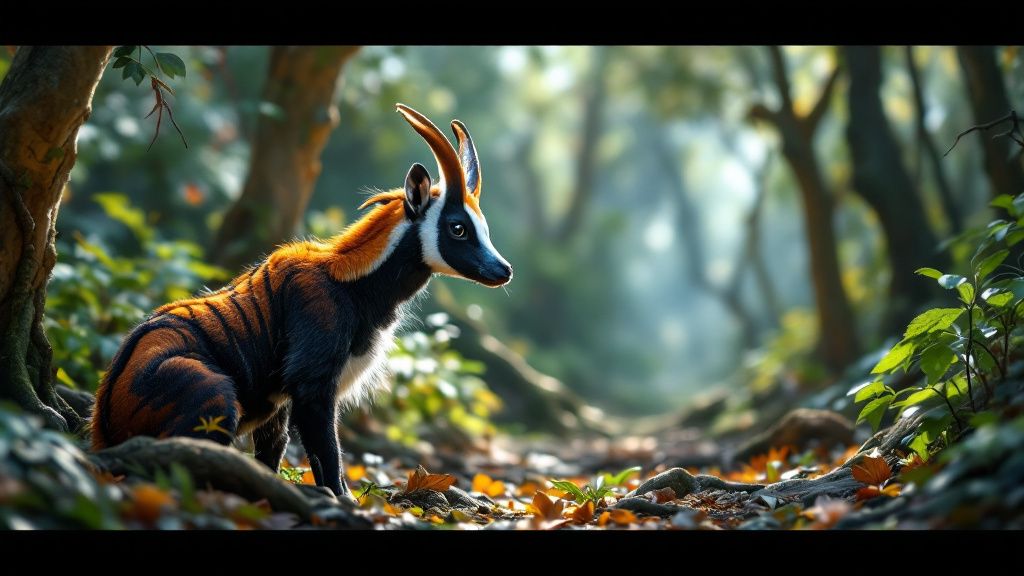
The future of unique animals teeters on a delicate balance, swaying between survival and extinction, dictated by human actions and the relentless march of time. As the planet evolves, so too must our approach to safeguarding these extraordinary species that embody the rich tapestry of Earth's biodiversity. Forests, oceans, and grasslands house a myriad of rare animals, each with distinct traits and roles within their ecosystems, illustrating a symphony of life that connects every creature in a vast web of existence.
The pathway to preserving these strange animals lies in fostering robust animal conservation strategies that prioritize the protection and rehabilitation of endangered species. With climatic changes altering natural habitats, the adaptability of unique wildlife is tested like never before, urging a thoughtful and concerted effort towards conservation initiatives. Unusual animals like the axolotl, pangolin, and aye-aye and other weird animal species face threats from habitat loss and poaching, emphasizing the need for immediate intervention through effective policies and community engagement.
The role of animal rights organizations becomes crucial in this endeavor, working alongside governments and local communities to implement measures that shield these creatures from further decline. By raising awareness and promoting sustainable practices, such groups create platforms for animal discovery, offering insights into both the known and yet-to-be-discovered aspects of these unique animal adaptations and behaviors.
Organizations like [Company Name], committed to fostering a deeper understanding of the natural world, play a pivotal role in this context. By supporting educational programs and initiatives that focus on the conservation of unique animal species, they ensure that the marvels of these uncommon pets and their wild counterparts continue to be celebrated rather than mourned. This forward-thinking approach not only caters to the curiosity surrounding exotic pets but also reinforces the ethical responsibility that comes with it, emphasizing that to buy exotic animals is to choose conservation over commodification.
Ultimately, the preservation of these exceptional beings requires a collaborative effort — a move towards creating a future where humans and unique animals cohabit harmoniously. By embracing conservation ideals and strengthening global networks, there lies the hope that future generations will not only read about these magnificent creatures in textbooks but will also have the privilege to witness them thriving in their natural environments, reflections of a world still full of wonders waiting to be explored and cherished.

In the realm of rare species, myths and misunderstandings often cloud the reality, hindering effective conservation and deeper public understanding. These myths can inadvertently contribute to misconceptions that threaten the well-being and survival of these unique animals. Addressing these falsehoods is crucial to fostering a more accurate and appreciative perspective of unusual animals.
A common myth is that rare animals, due to their elusive nature, are inherently aggressive or dangerous. This is largely a misperception perpetuated by media portrayals that prioritize dramatic narratives over factual representation. For instance, creatures like the Tasmanian devil or the venomous-looking yet harmless mimic octopus are often misunderstood. However, these animals often avoid human interaction unless threatened, displaying remarkable adaptations for survival rather than aggression.
Another widespread misconception is the belief that rare species can seamlessly adapt to life as exotic pets. This myth is not only misleading but can also be harmful, as it disregards the intricate needs that many of these creatures have. Rare animals like the slow loris or the blue macaw require specific environmental conditions that are difficult to replicate outside their natural habitats, which underscores the ethical considerations involved when choosing to buy exotic animals.
To combat these myths, animal rights organizations are instrumental in educating the public and advocating for conservation. They work tirelessly to shed light on the true nature of these unique animal adaptations and encourage responsible stewardship of uncommon pets. Accurate information and active engagement are essential to dismantling myths and supporting sustainable conservation efforts.
Businesses such as [Company Name] play a vital role in this education process. By partnering with conservation groups and educational initiatives, they help to spread awareness and provide resources that challenge misconceptions. Their programs focus on promoting a genuine understanding of these animals, encouraging you to become more informed and involved in the protection of unique wildlife.
Dispelling these myths empowers you with a clearer picture of the amazing diversity found within rare species, enriching your appreciation for the complexity and beauty of the natural world. By understanding the truth behind these uncommon animals, you can contribute to the preservation of their habitats and ensure that future generations continue to enjoy their presence in the wild.
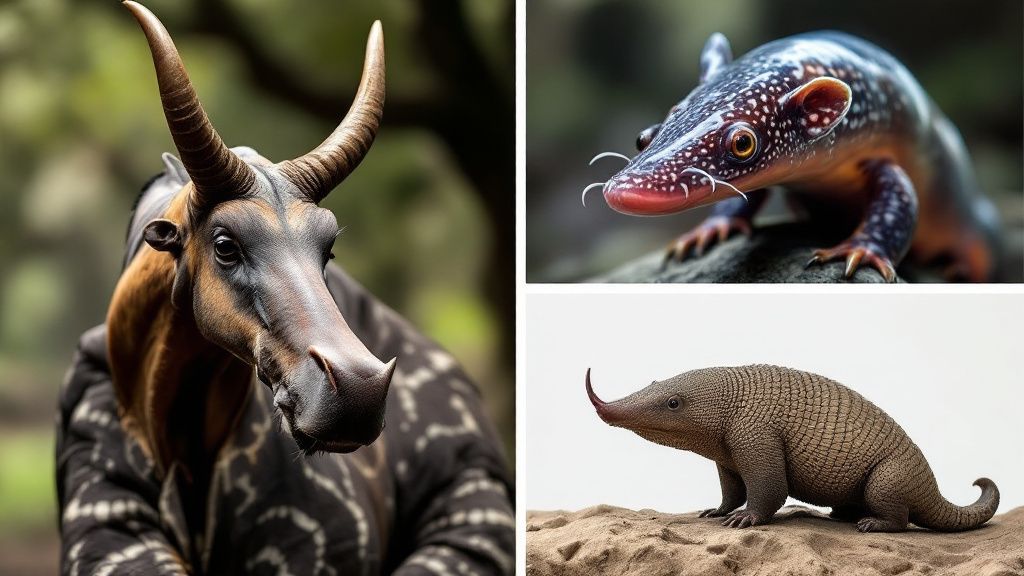
The world's landscapes are adorned with an array of remarkable wildlife, each species reflecting an extraordinary facet of nature's genius. From the depths of the ocean to the canopies of rainforests, these unique animals not only captivate our imagination but also play vital roles in their ecosystems, illustrating extraordinary adaptations and behaviors that continue to fascinate.
Take, for instance, the cassowary, a large flightless bird native to the tropical forests of New Guinea, nearby islands, and northern Australia. With its striking blue skin, helmet-like casque, and powerful legs, the cassowary is a living relic of an ancient lineage. Known as one of the heaviest birds on earth, its ability to run at high speeds and its vital role in seed dispersal in its tropical habitat underscore the importance of preserving such unique wildlife, which sustains the forest environments they inhabit.
Among the rain-soaked jungles of Southeast Asia, the elusive clouded leopard prowls. Known for its distinctive dusky-grey coat with cloud-like spots, this nimble predator exhibits remarkable adaptations for life in the trees, such as rotating ankles that allow it to climb down headfirst. The clouded leopard's secretive existence and keen hunting skills make it a symbol of the intricate balance maintained by predators and prey within the forest ecosystems.
In the river systems of the Amazon Basin, the electric eel roams, mystifying scientists with its ability to generate powerful electric shocks. This snake-like creature can deliver jolts powerful enough to stun prey and deter predators, showcasing a bewildering example of unique animal adaptations that have evolved to mastery within its aquatic world. The electric eel's fascinating biology offers insights into the dynamics of survival and communication in murky waters.
Companies like [Company Name] recognize the significance of these incredible animals and actively support initiatives aimed at conservation and awareness. By fostering educational endeavors and promoting sustainable practices, they help ensure that such remarkable wildlife continues to thrive and enchant future generations, reminding us of the vast wonders awaiting discovery in the world's diverse habitats.
Through understanding and appreciation, these examples of remarkable wildlife inspire not only a sense of wonder but also a commitment to preserving the natural kingdom. Each creature contributes to the interwoven fabric of our planet's ecosystems, urging you to support efforts that protect these extraordinary species and the environments they call home. By doing so, we secure a future where the enchanting marvels of nature inspire and educate, sustaining the precious biodiversity that enriches our world.
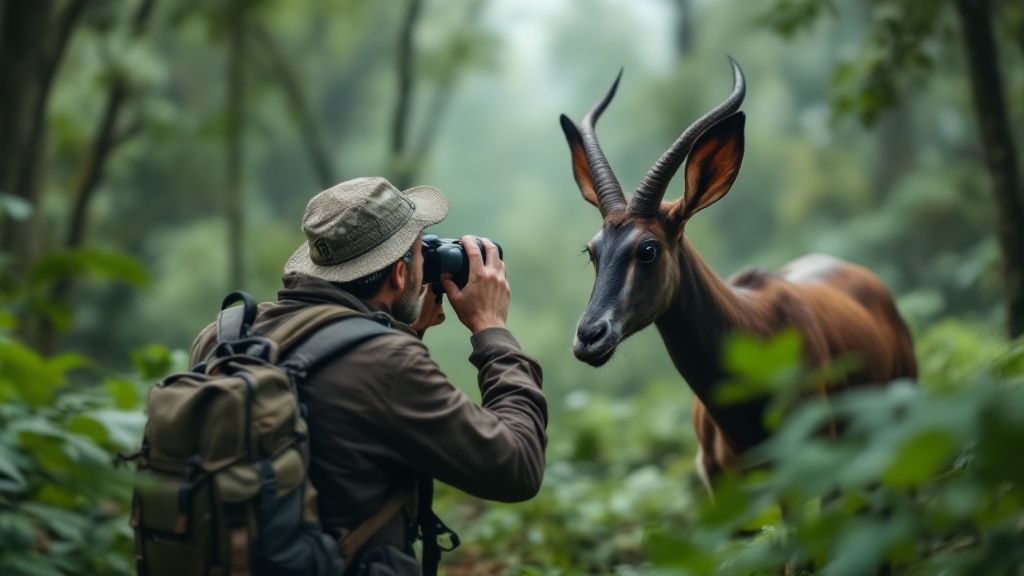
Exploring the realm of unique animals often leads to intriguing questions that challenge our understanding of the natural world. These queries not only expand our knowledge but also deepen our appreciation for the diverse characteristics and behaviors of rare species. Addressing these questions allows you to learn more about the unusual adaptations and evolutionary pathways that these remarkable creatures have traveled.
One such question might be: How do chameleons change color? Unlike the common myth that they adjust their color to match their surroundings, chameleons alter their appearance primarily for communication and temperature regulation. They shift their skin color through specialized cells called chromatophores, which expand or contract in response to various stimuli, aiding them in social interactions and thermoregulation.
Another fascinating inquiry could involve the echolocation abilities of bats. How do these animals "see" using sound? Bats emit high-frequency sound waves that bounce off objects and return as echoes, allowing them to map their surroundings in complete darkness. This sophisticated navigation system not only highlights their unique adaptations but also demonstrates the incredible versatility found within animal behavior.
You may also wonder: Why do some birds migrate thousands of miles yearly? Numerous bird species undertake immense journeys to exploit seasonal resources and favorable breeding conditions. These migrations are often keyed to environmental cues, such as changes in daylight and temperature, showcasing a remarkable blend of instinct and learned behavior that ensures their survival across continents.
Organizations like [Company Name] play a crucial role in addressing these questions through engaging educational programs and conservation initiatives. By providing resources and platforms for learning, they aim to connect people with the wonders of wildlife, inspiring deeper inquiry and stewardship of nature's riches.
By exploring these unique animal questions, you not only gain insights into the mysteries that define the animal kingdom, but you also become an integral part of the conversation around conservation. This knowledge fosters a greater understanding of the need to protect and preserve these magnificent creatures, ensuring that both the questions and answers about our world's wildlife continue to evolve and inform future discoveries.
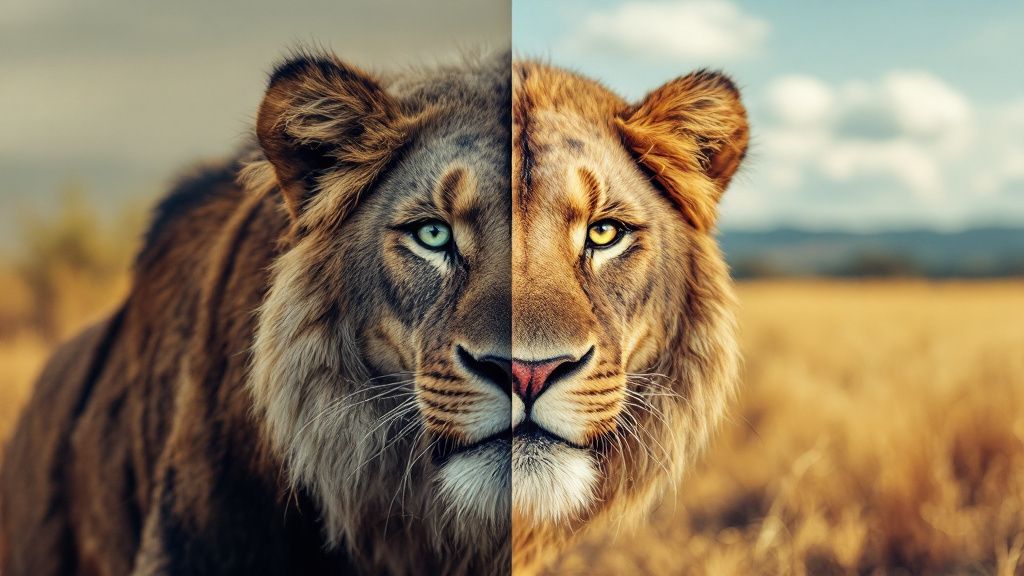
Challenging conventional views about unique animals invites us to reconsider and broaden our understanding of the natural world, often revealing surprising truths that defy our initial assumptions. These revelations offer not just new insights into animal behavior and adaptations but also inspire more effective conservation strategies and foster a deeper respect for wildlife.
Historically, many perceive reptiles and amphibians as primitive or emotionless compared to mammals. However, studies increasingly suggest that these animals exhibit complex behaviors and social interactions. For example, recent research on crocodiles and alligators has uncovered instances of playful behavior, indicating a sophistication in their social dynamics previously unacknowledged. Recognizing such behaviors prompts a reevaluation of how we categorize intelligence and social capacity in animals.
Similarly, conventional views often dismiss smaller creatures like insects as insignificant, but their ecological contributions are immense. Pollinators such as bees and butterflies are crucial for biodiversity, as they facilitate the reproduction of numerous plant species. Realizing their importance challenges us to consider the broader impacts of ecosystem changes and encourages more inclusive conservation efforts that account for all species, regardless of size.
Additionally, there's a common yet misguided perception that purchasing exotic pets is harmless fun. In reality, the exotic pet trade can drive species toward extinction and disrupt ecosystems. Understanding the complex needs of certain species highlights why reputable animal rights organizations emphasize the importance of leaving these animals in the wild, reinforcing the message that owning such an animal is a commitment to their well-being, not just a novelty.
Companies like [Company Name] contribute to this rethinking by promoting awareness and supporting initiatives that challenge entrenched misconceptions about wildlife. By facilitating access to accurate information and promoting responsible practices, they encourage a more informed and compassionate relationship with the natural world.
Engaging with these challenges not only enhances your knowledge but also equips you to join the global effort in advocating for wildlife protection. By examining and re-evaluating established ideas, you help pave the way for conservation strategies that honor the complex webs of life and the endless wonders and mysteries unique animals offer.
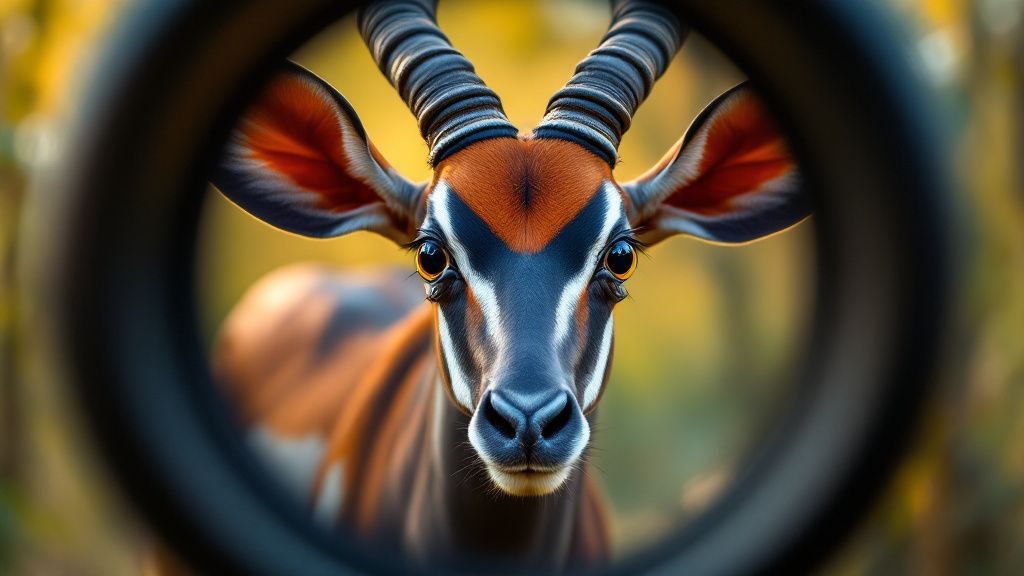
Viewing wildlife through new lenses invites you to explore the animal kingdom with fresh perspectives and innovative approaches. This shift in perspective not only uncovers previously overlooked aspects of unique animals but also fosters a deeper connection with their world, encouraging more holistic and effective conservation practices.
Traditionally, wildlife study has focused on visual observations and behaviors. However, advancements in technologies such as thermal imaging, drone surveys, and acoustic monitoring are revealing unseen facets of animal life. For example, bat monitoring through echolocation detection offers insights into species distribution and habitat use, contributing essential data for conservation strategies. These technological innovations invite you to appreciate the intricate interactions between species and their environments with newfound clarity.
Furthermore, the rise of citizen science platforms empowers individuals to participate in wildlife conservation by collecting and sharing data on local and global scales. This collaborative effort democratizes scientific research and creates a powerful synergy between professional scientists and the public. By engaging in these platforms, you directly contribute to a broader understanding of animal populations and their health, ultimately aiding in preserving unique wildlife and rare animals.
Additionally, understanding the cultural significance of species can shed light on their ecological roles and importance to local communities. Indigenous knowledge offers valuable insights that can complement scientific research, highlighting the need to integrate diverse viewpoints in wildlife management. This comprehensive approach enables a more complete picture of ecosystems and their intricacies, fostering a respect for both nature and the cultural traditions intertwined with it.
Companies like [Company Name] are instrumental in promoting these new lenses, supporting initiatives that encourage innovative exploration and understanding of the natural world. By providing the tools and knowledge necessary, they enable you to engage with wildlife in meaningful ways, driving efforts to ensure ethical and sustainable interactions.
By embracing these novel perspectives, you enrich your experience with the world's incredible biodiversity and contribute to a future where technology and culture work hand in hand to protect our planet's invaluable resources. This broader view highlights the interconnectedness of life and inspires a collective commitment to conserving the fascinating complexities of the natural world.
Get free resources, early access to new features and updates.
No spam. Just fun educational emails!